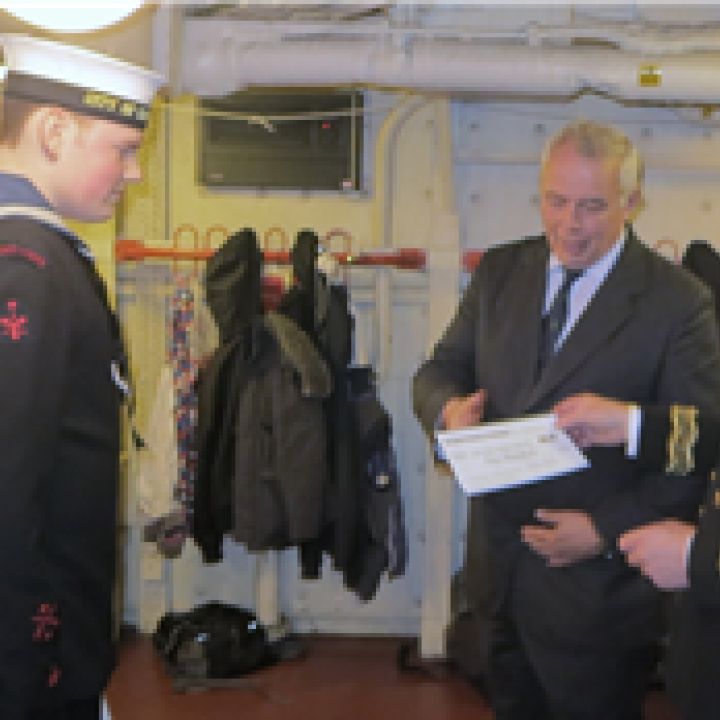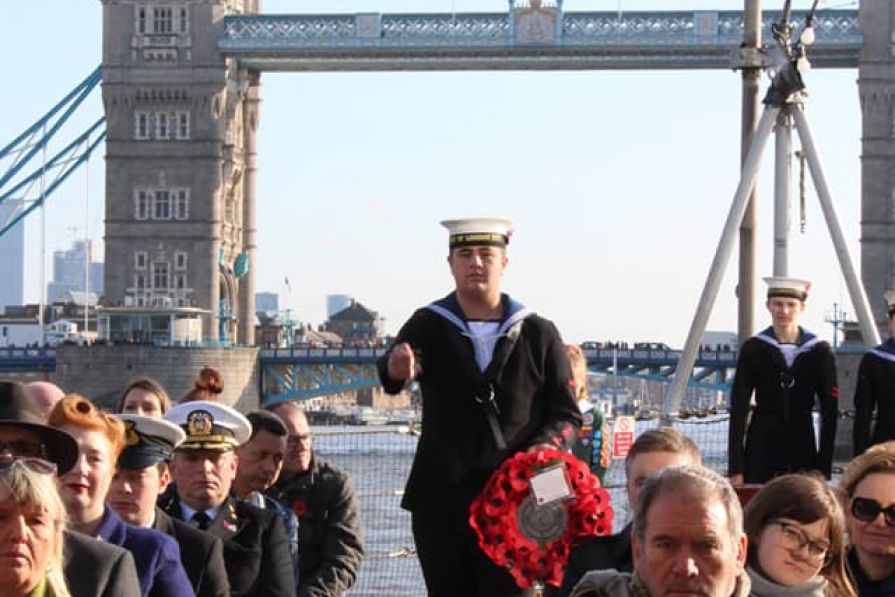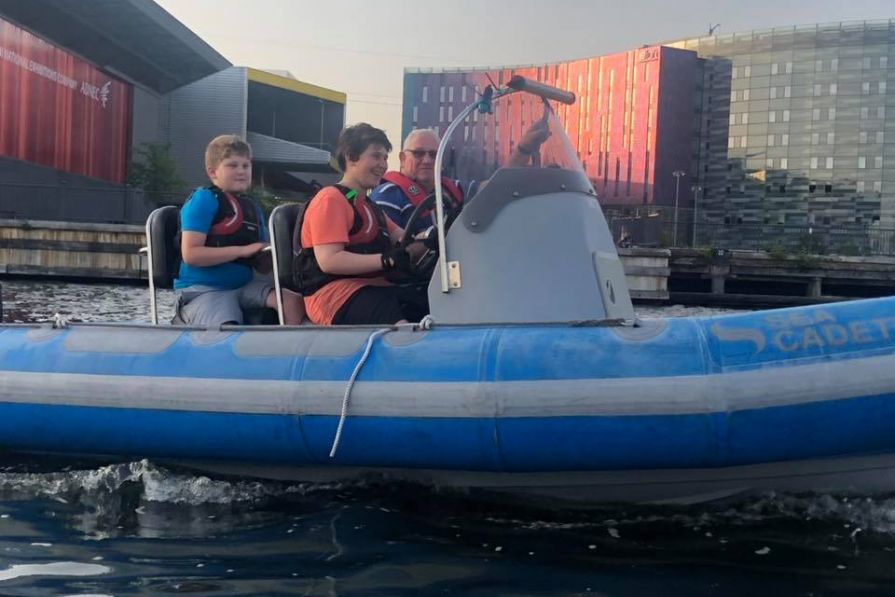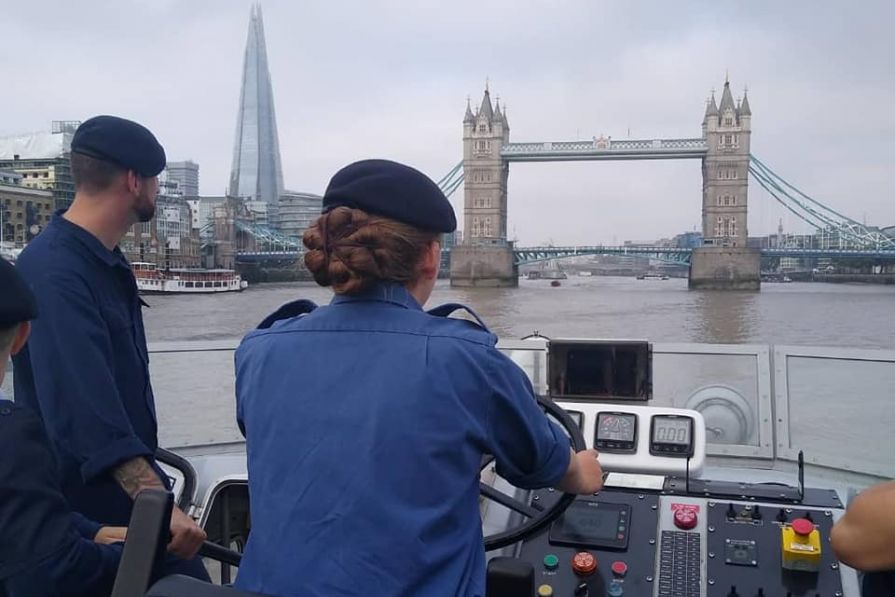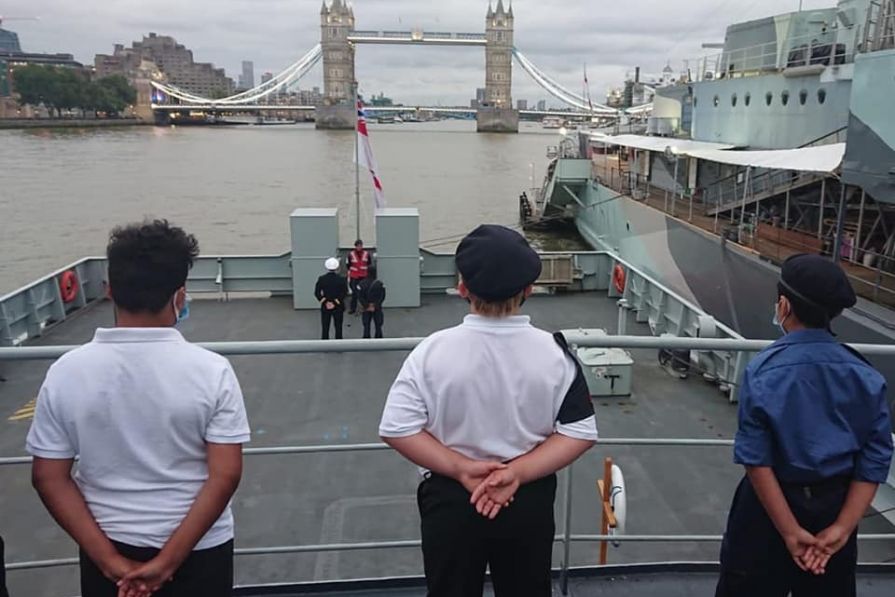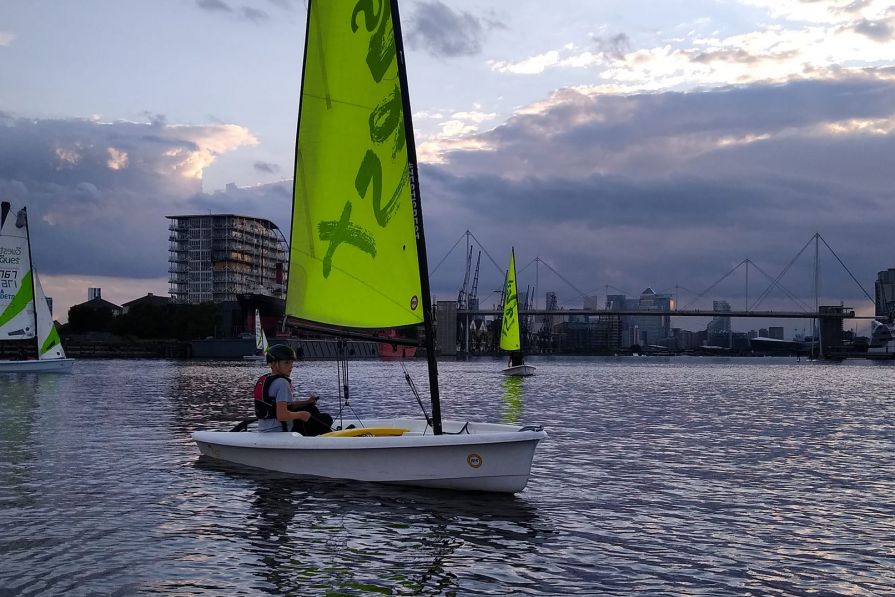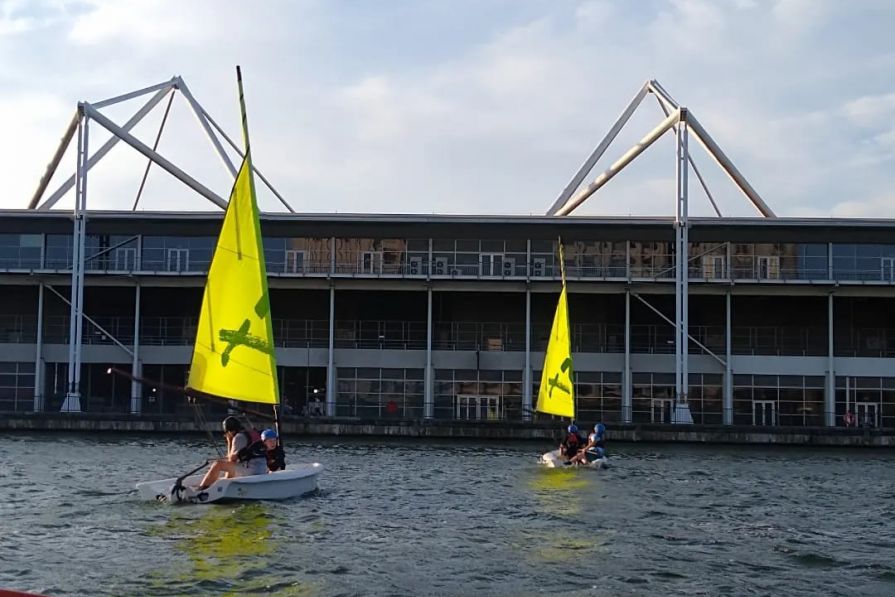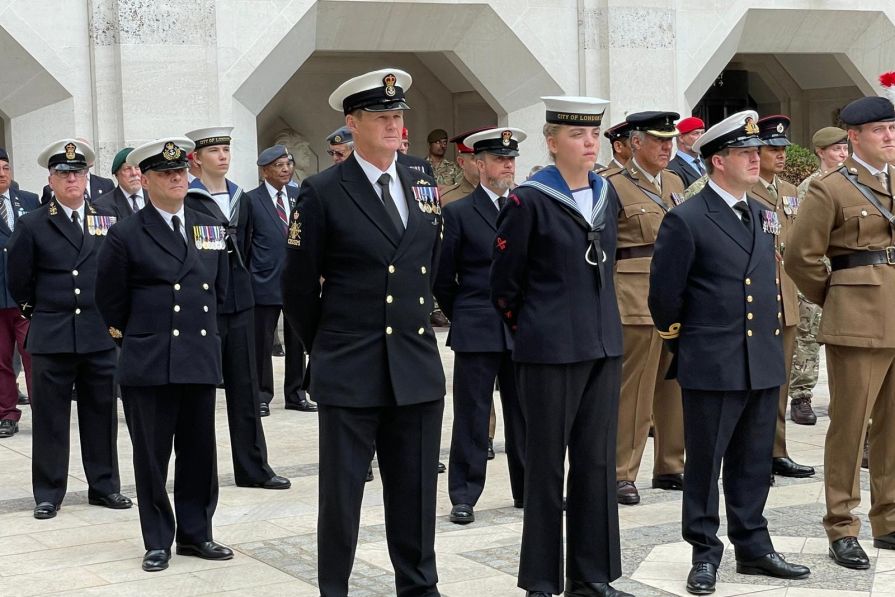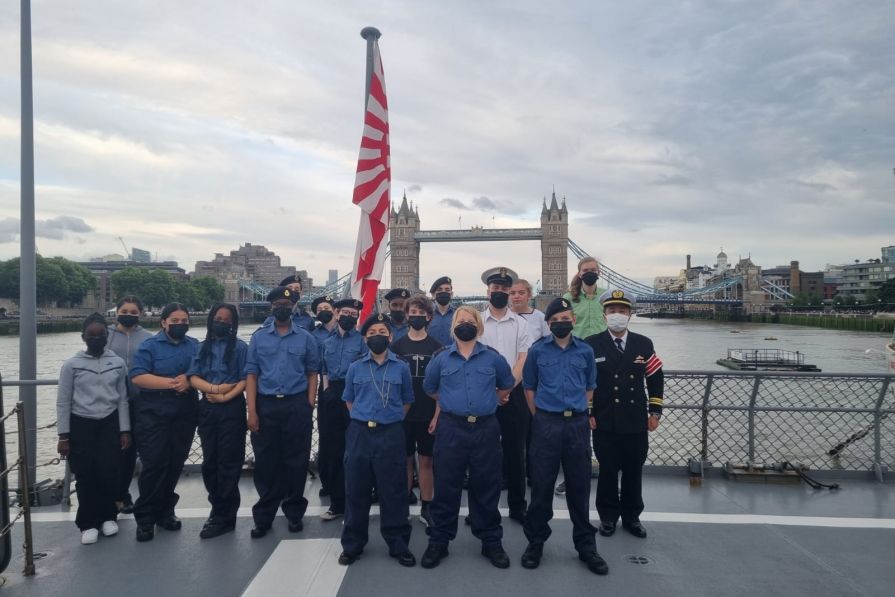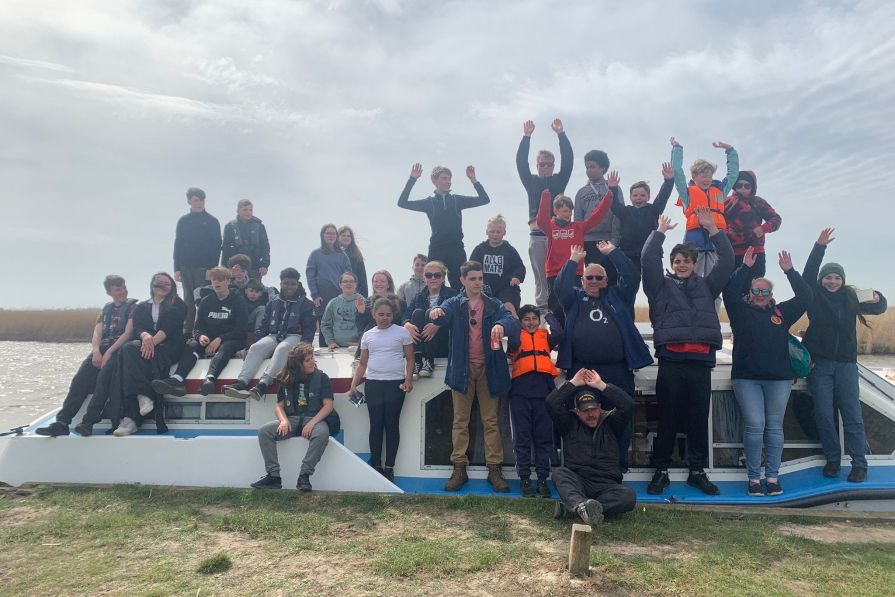We have met the ex-Navy minesweeper TS Iveston before- see news articles for the 18th October and the 8th September 2013. One member of staff, Marine Engineering Instructor Jason Rochester, and one Cadet, James Ambler, spent the weekend with members of the London Area Marine Engineering team carrying out various maintenance tasks aboard Iveston. Iveston is approaching her sixtieth birthday and needs lots of TLC.
The photograph shows James (see article dated 14th January 2014) removing a fresh water heat exchanger from one of Iveston’s Napier Deltic propulsion engines. The Deltic engine was developed to meet a wartime need. As our friends in the Costal Forces Veterans’ Association (see article dated 21st July 2013) will know all too well, British fast attack craft such as the Motor Torpedo Boat and the Motor Gun Boat, were at a severe disadvantage to German vessels such as the E-boat, because the British craft were powered by petrol engines whereas the German vessels were powered by diesel engines. Petrol is far more flammable than diesel.
In 1943 the Admiralty set up a committee to develop a high-power, lightweight diesel engine. The result was a two-stroke opposed piston design with the cylinders arranged in a triangle, the cylinder banks forming the sides, and tipped by three crankshafts, one at each apex. The crankshafts were connected with phasing gears to drive one output shaft. In this arrangement, there were six banks of pistons driving three crankshafts, the same as three separate V-engines of the same overall size. Various models of Deltic engine could be produced with varying numbers of cylinders, though nine and eighteen cylinders were the most common, having three and six cylinders per bank respectively. In 1946, the Admiralty placed a contract with the English Electric Company, parent of Napier, to develop this engine.
Not only was this engine used, as originally intended, in fast attack boats (getting a walk-on part in the Vietnam War) it also proved ideal for use in minesweepers, having both a smaller magnetic influence and lower sound levels (for this use, the engines were de-rated) than alternative engines. Launched in 1955 as HMS Iveston, the ship had the role of a mine sweeper and was fitted with two Mirrlees V12 diesel engines for propulsion, a 9 cylinder pulse generator for magnetic mine clearance and three 6 cylinder Foden generators for power generation. The pulse generator was removed when the ship was converted to a mine hunter in 1964 when the Mirrlees engines were replaced with two 18 cylinder Deltics and a fourth Foden generator fitted. In a final irony, after a series of acquisitions and mergers, Napier has been absorbed into the German company MAN Diesel and Turbo.





